Baking Powder vs Baking Soda: Why You Can’t Just Swap Them
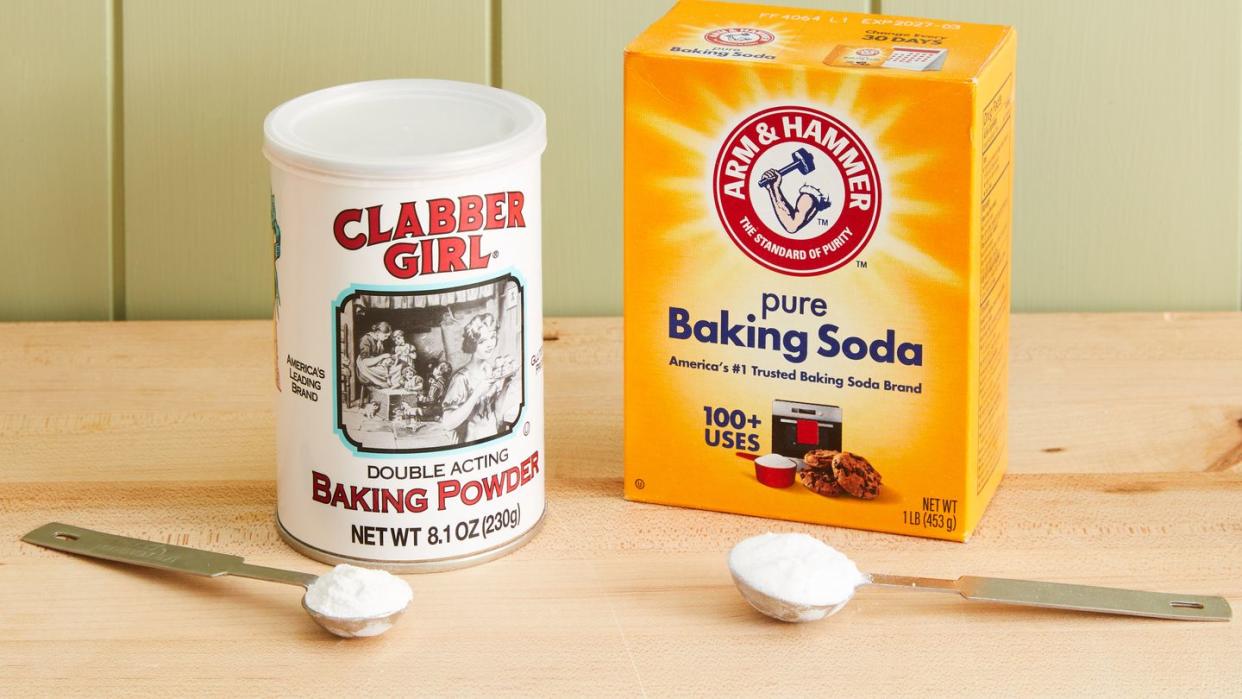
"Hearst Magazines and Yahoo may earn commission or revenue on some items through these links."
[table-of-contents] stripped
Has this happened? You're getting ready to bake a few dozen cookies. You’re pulling out the ingredients, and you see it calls for baking powder and baking soda. But you only have one.
Now you’re wondering: what’s the difference between baking soda and baking powder? Can you just double the one and skip the other? If you're baking something like a classic cake that only calls for baking powder, can you just use baking soda instead?
These baking staples do a similar thing, but in very different ways.
How Are Baking Soda and Baking Powder Alike?
Both baking soda and baking powder are chemical leaveners, meaning they help dough or batter rise.
They do it quickly so you don't need to wait for a natural leavener, such as yeast, as you would with a homemade bread, or by expending a lot of effort, such as by physically whisking or beating air in, as you would with a soufflé.
How Are Baking Soda and Baking Powder Different?
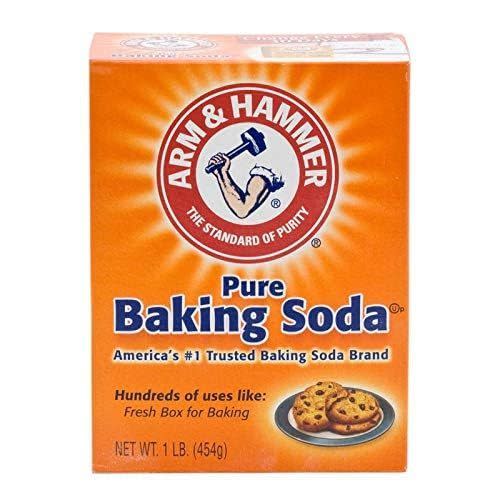
Arm & Hammer Baking Soda
amazon.com
$9.99
Baking soda (also known as bicarbonate of soda) is composed of 100% sodium bicarbonate. It's a salt compound that is actually mined from the ground, like table salt.
When sodium bicarbonate is mixed with an acid, such as lemon juice, it creates carbon dioxide gas, forming bubbles. (Other acids such as vinegar, buttermilk, or cocoa will also work.)
Baking soda begins to produce bubbles as soon as it’s mixed with the acidic ingredient.
The bubbles are what give your muffins, cookies, or other baked goods their light airy texture. Because baking soda starts to work immediately, when mixing a batter that contains just baking soda, you want to get it in the oven as soon as possible, before the bubbles dissipate.
Baking soda can also help baked-goods brown better. This is because baking soda is a base, or alkaline (as opposed to an acid) and alkalines help encourage browning.
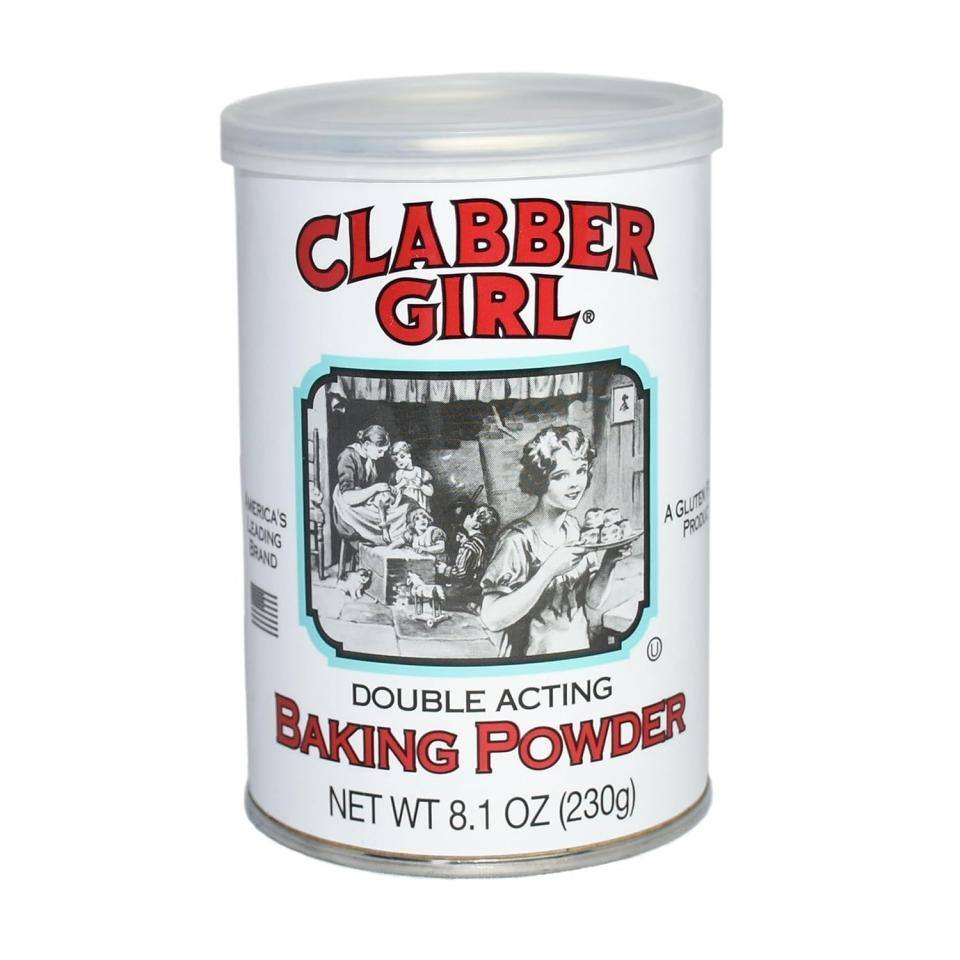
Clabber Girl Baking Powder
$2.63
Courtesy AmazonBaking powder does contain sodium bicarbonate, but it also contains a powdered acid, typically cream of tartar. (It also usually has some corn starch to help it stay dry and keep from clumping.)
When baking powder gets wet, the base and the acid starts to mix, which creates the same bubbly reaction as baking soda and vinegar.
Heat and moisture are required to activate the baking powder. Because it contains a dry acid baking powder is often used in recipes that don’t already call for an acidic ingredient which would otherwise be needed to activate baking soda.
Single- vs Double-Acting Baking Powder
Further complicating things, there are two types of baking powder: single-acting and double-acting, though you will likely only see double-acting baking powder on store shelves.
Double-acting, as the name implies, acts twice: first when it is mixed with a liquid, and again when it is exposed to heat.
Single-acting is most-often used in commercial settings. Single-acting starts to work immediately when mixed with a liquid, similar to baking soda.
Can You Substitute Baking Soda for Baking Powder and Vice-Versa?
You can make substitutions in some recipes, with some success. However, you can't simply exchange them 1:1.
Because it is pure bicarbonate of soda, a teaspoon of baking soda is 3 to 4 times stronger than a teaspoon of baking powder. So, to substitute effectively, you will have to do some math. (And if you're using baking soda in place of baking powder, you'll also need to add an acid.)
To use baking soda when baking powder is called for: For each 1 teaspoon baking powder, use 1/4 teaspoon baking soda + 1/2 teaspoon cream of tartar. If you don't have cream of tartar, you can use 1 teaspoon of any liquid acid, such as buttermilk, vinegar, or lemon juice. Note: this will impart a sour taste in your baked good.
To use baking powder when baking soda is called for: Simply use 3 times the amount of baking powder. So if your recipe calls for 1 teaspoon baking soda so you would need 3 teaspoons of baking powder.
Note: These conversions are not foolproof. It's always better to use the leavener that is called for, both for flavor and for effect. It's also best to check best-by dates, and mark when you opened your package. Baking powder especially is not as effective at making batters rise after one year open because the acid and bicarbonate have had time to interact and neutralize each other. Read below for how to check that they're still working.
Why Do Some Recipes Call for Both Baking Soda and Baking Powder?
As we learned above, baking soda requires an acid to become activated and release carbon dioxide which creates bubbles thus providing lift to a baked good.
But sometimes a baked good needs to rise for longer than a baking soda's leavening power can last. Baking powder works slower, and provides a longer leavening time.
Another reason would be because using both effects both the flavor and browning. For example, you are making buttermilk pancakes that you want to have a tangy flavor. If you use just baking soda all of the acidic flavor may get neutralized by the chemical reaction between the baking soda and buttermilk. By adding baking powder, too, you will maintain some of the tangy flavor while still having enough leavening to create light and fluffy pancakes.
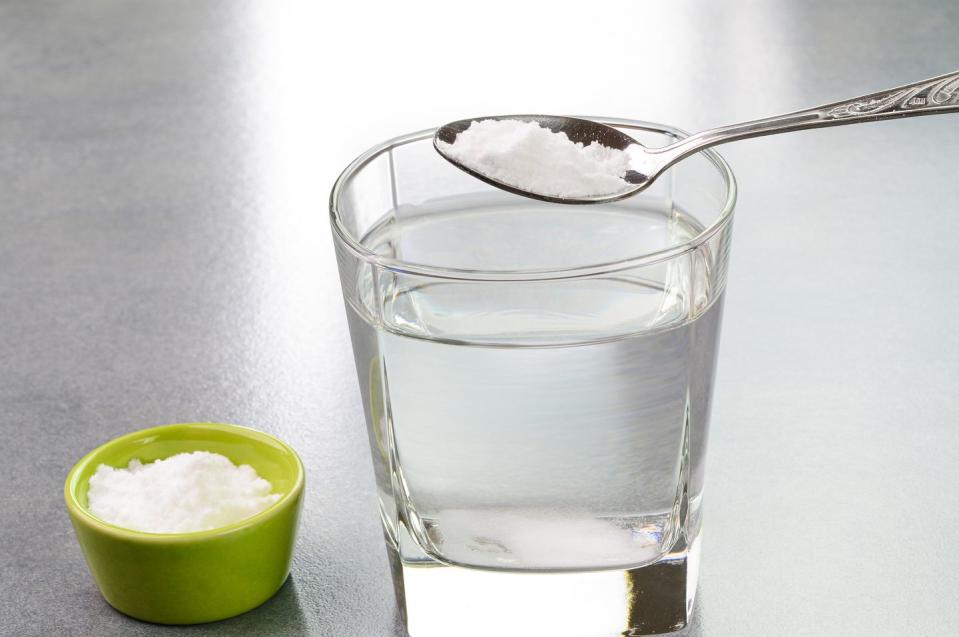
How to Check If Your Baking Soda and Baking Powder Are Still Fresh
While both baking soda and baking powder have expiration dates on the bottom of the package, it's only relevant to unopened containers. Opened containers of baking soda and baking powder have about a one-year shelf life. After that, it needs to be tested to make sure it's still active.
To test that your baking powder is still good place a few tablespoons of hot water in a glass measuring cup. Add a teaspoon of baking soda. If it bubbles, then it’s still good.
To test that your baking soda is still good place a few tablespoons of vinegar in a glass measuring cup. Add a teaspoon of baking soda. If a volcano ensues, then it’s good to use.
Irish Soda Bread
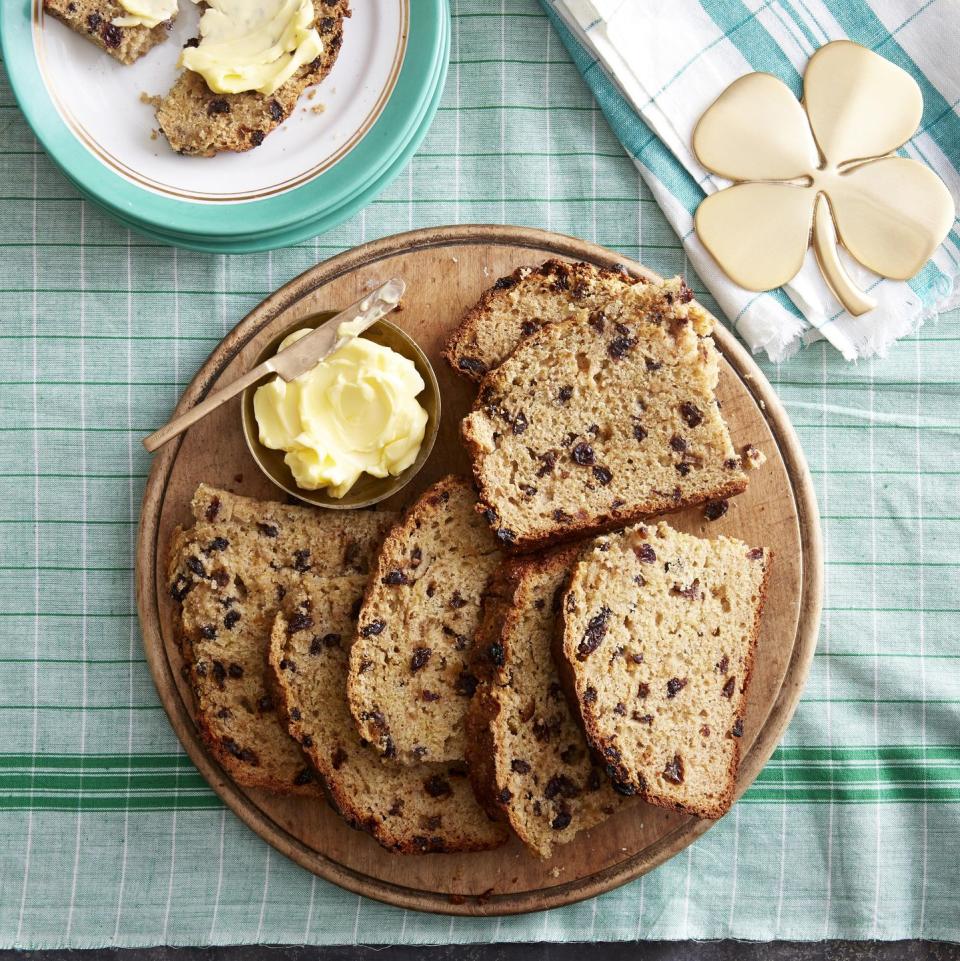
Olive Oil Cake with Citrus Compote
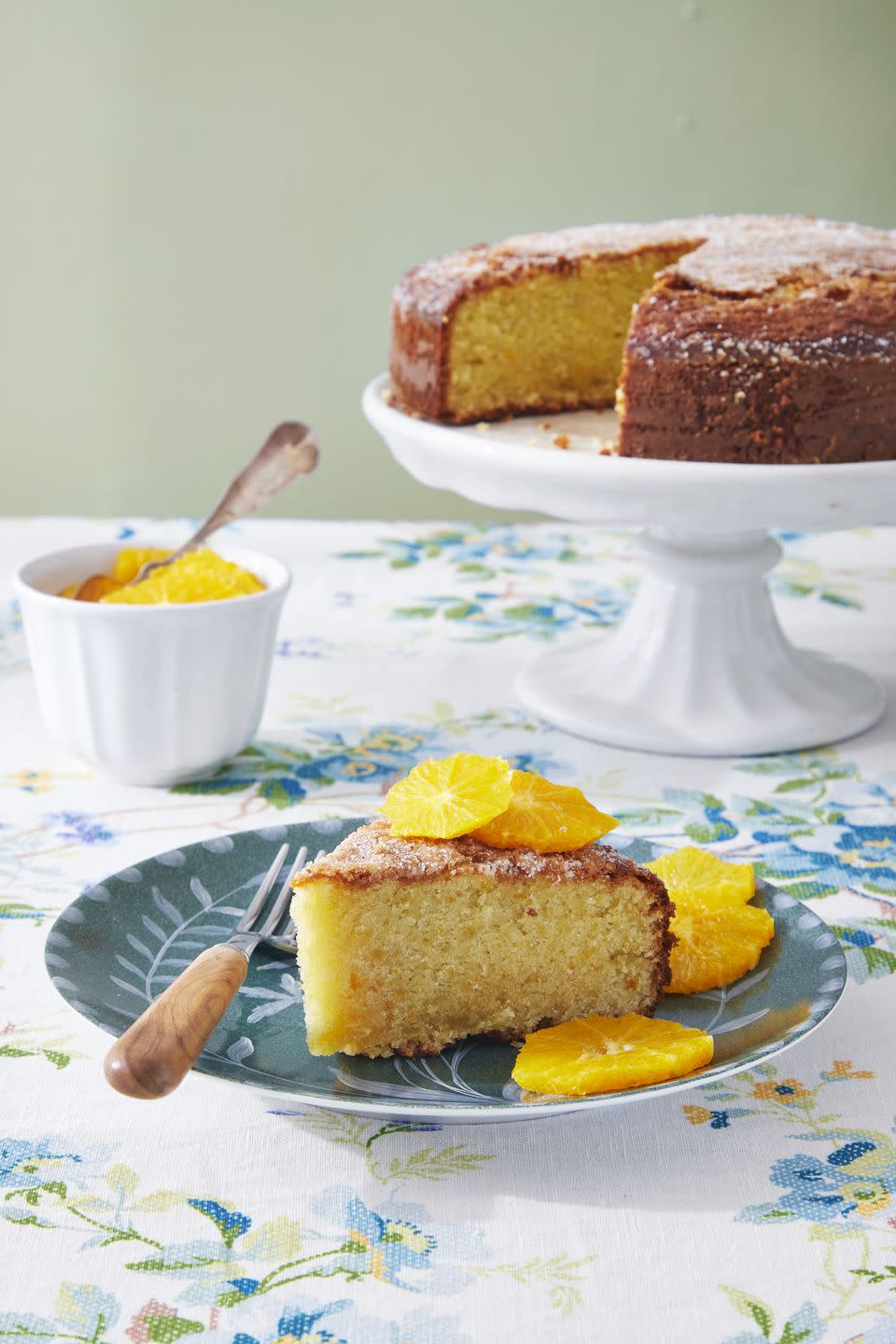
Mile-High Flaky Biscuits
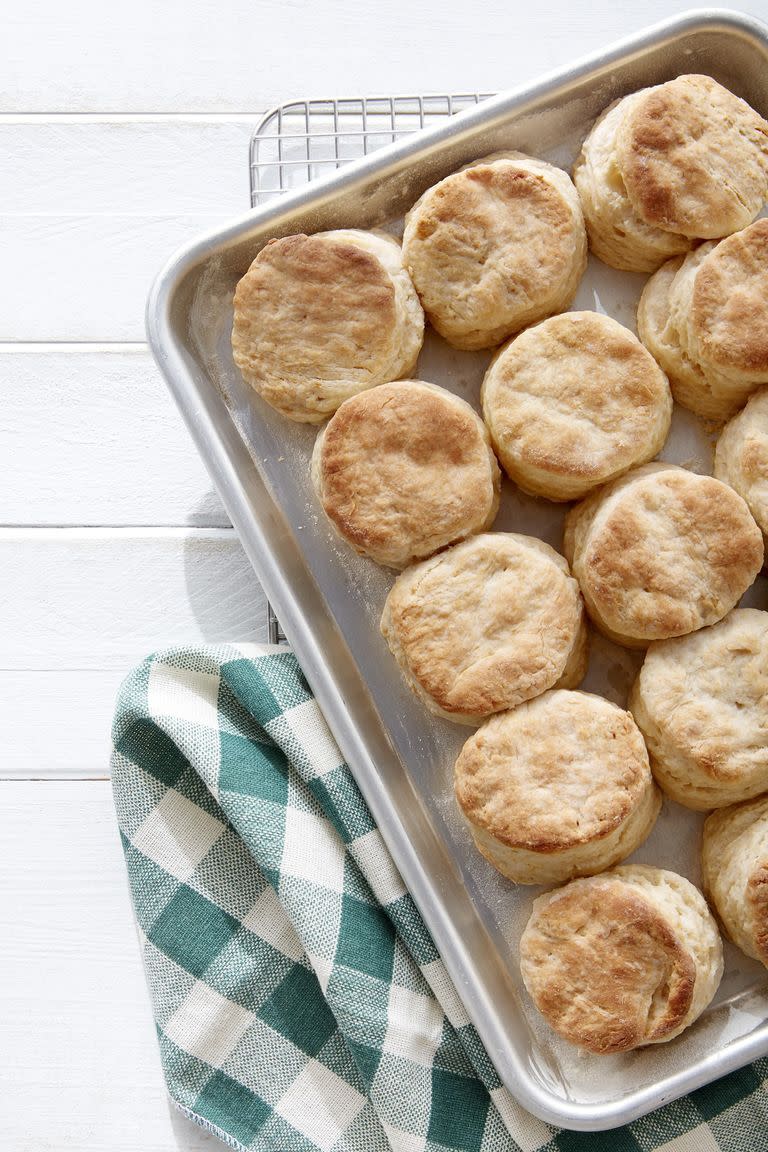
Cheddar, Bacon, and Chive Quick Bread

You Might Also Like

